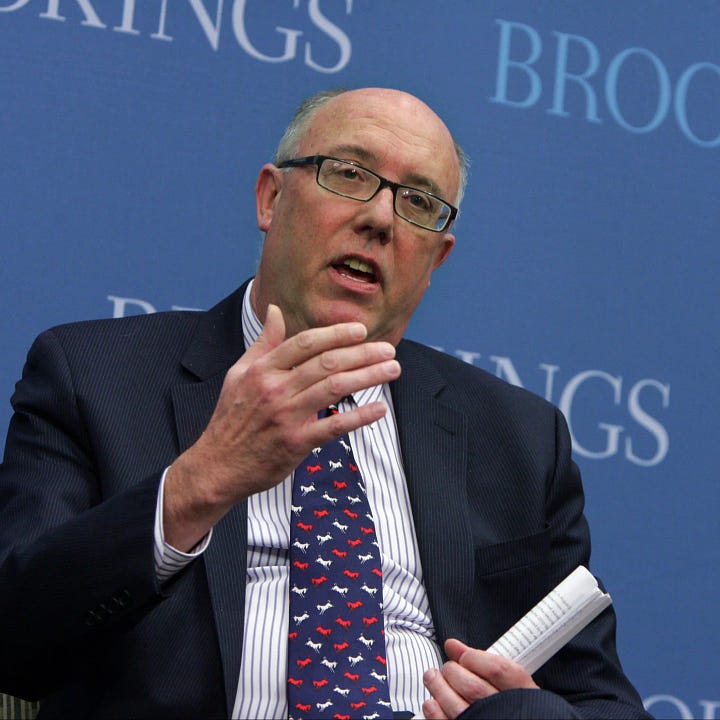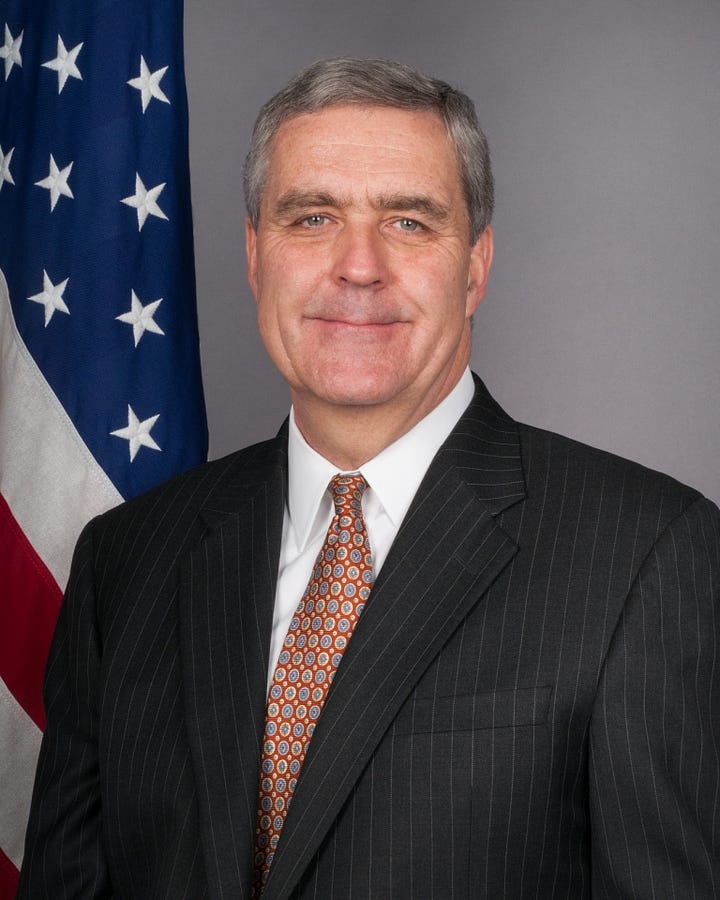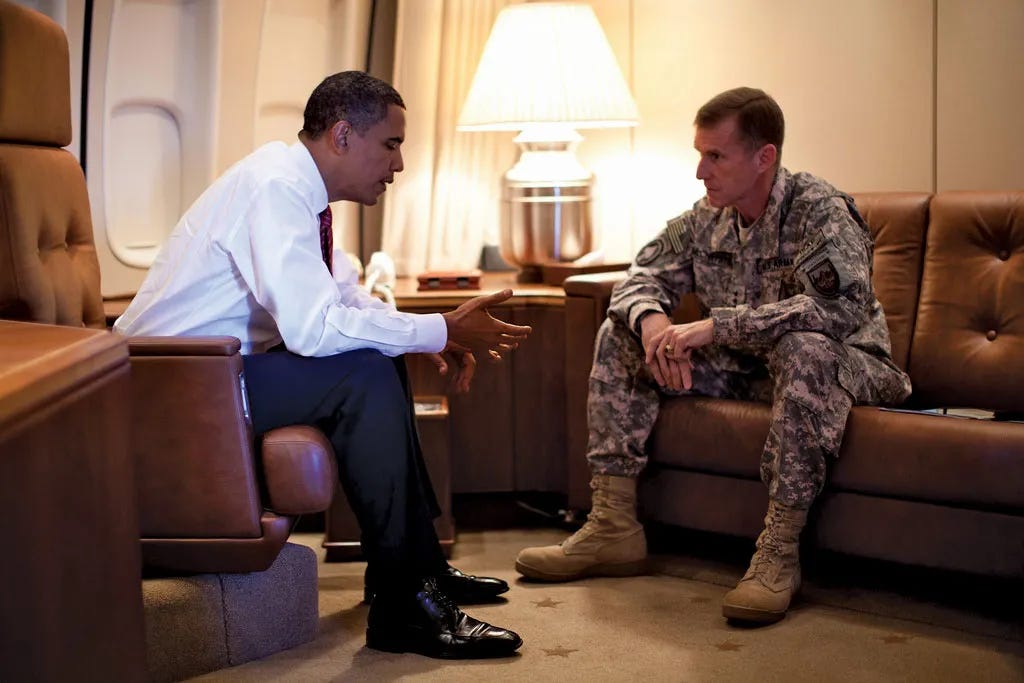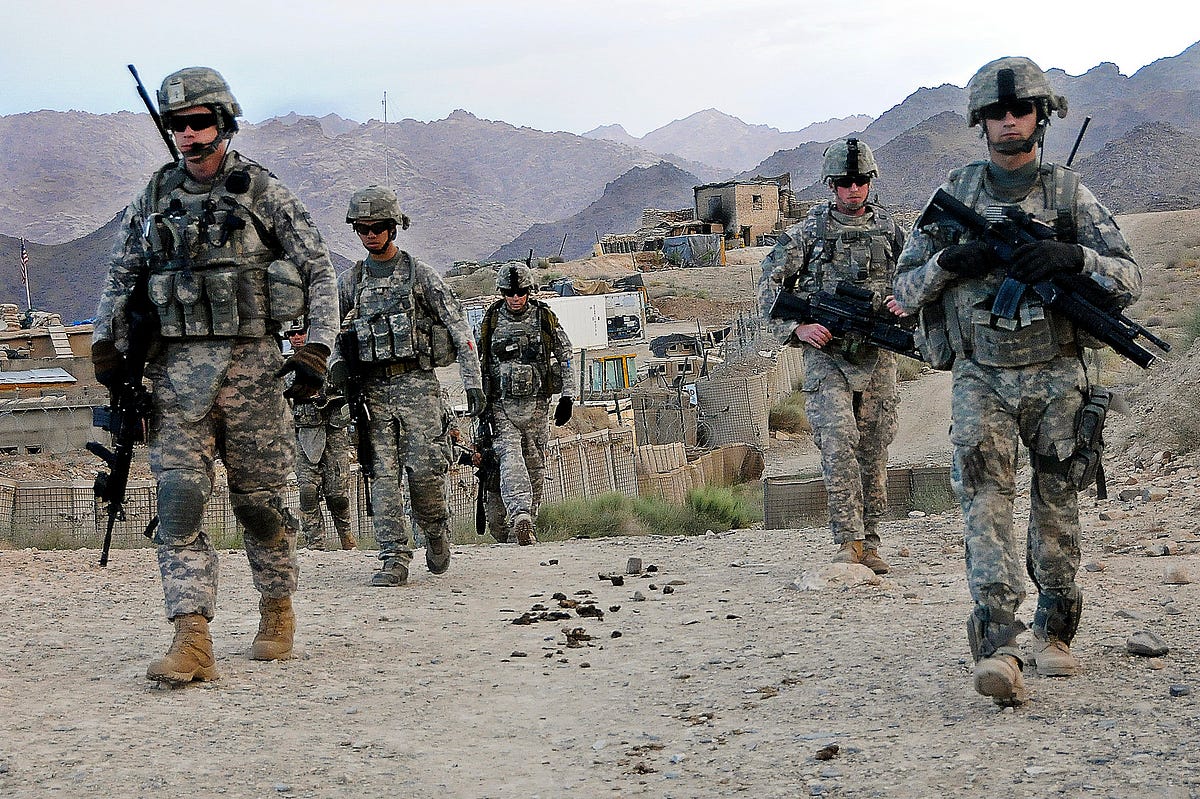The Right to Compromise: President Obama and the Afghanistan Surge Decision
A Case Study of American Civil-Military Relations
“The United States is not losing Afghanistan, but is not winning either, and that is not good enough” read the first sentence of General Doug Lute’s top-secret report.1 President George Bush had ordered a review of the War in Afghanistan much in the same way they had previously done in Iraq, which spurred the decision to change strategies and increase the number of troops in the country, which was ultimately successful in driving down the level of violence. One of my favorite scholarly articles on American civil-military relations is written by Dr. Peter Feaver, titled “The Right to Be Right: Civil-Military Relations and the Iraq Surge Decision.” In it, he details the civil-military approach to that decision. He concluded that President Bush's Iraq surge decision in late 2006 was a result of a hybrid approach in civil-military relations, balancing between the professional supremacists' and civilian supremacists' perspectives to effectively implement the surge without fully vindicating either side. In many respects, President Barack Obama took the same approach in the debate about how to approach Afghanistan, suggesting a continuation of this hybrid model.
By the time President Obama came into office in 2009, the United States and its allies had already been in Afghanistan for eight years. The invasion of Iraq diverted U.S. troops from Afghanistan, and with a Taliban counteroffensive gaining momentum in 2006, the situation in Afghanistan deteriorated rapidly.2 The requested or necessary resources were never fully provided, while the strategy grew increasingly aimless. Lute called it “the poor man’s war.”3 Another military officer compared the resources devoted to Afghanistan to those that went to the China-Burma theatre during World War II.4 The United States was stuck.
Obama called Afghanistan “the good war” and campaigned to turn it around. His first official action as president was to send 17,000 troops to Afghanistan, a DOD request that the outgoing Bush administration had thrown to the new president.5 However, he arrived at the presidency skeptical about the military’s ability to deliver decisive results even with unlimited resources. In his view, “the military had become accustomed to getting whatever it wanted during the Bush years.”6 He told General David Petraeus during a visit to Iraq that “I expect you to ask for everything you need and more to ensure your success. That’s what you owe the troops who are under your command. My job, then, which in some ways is more difficult. Is I’ve got to choose. Because I don’t have infinite resources.”7 Obama’s views matriculated down to his key national security people, inevitably causing a clash between the military and civilians.
There are two distinct perspectives or schools of thought regarding American civil-military relations. One is “professional supremacists,” and the other is “civilian supremacists.” Professional supremacists argue that the recurring problem of civil-military ties, specifically in wartime, is ensuring the military an adequate voice and keeping civilians from micromanaging and mismanaging matters.8 The other camp argues that the central problem is ensuring that civilian guidance is followed even when the military disagrees with that direction.9 As Feaver argues, the debate over the surge in Iraq was a battle between these two groups. Eventually, it was synchronized using a hybrid model with input from both perspectives. As detailed here, the same process occurred regarding the decision to change strategy in Afghanistan.
Lute’s top-secret report was the first of several reviews done by the U.S. government. Lute’s review had been ordered during the last months of the Bush administration, so naturally, newly elected President Obama wanted another review done in the first two months of his presidency. For this, he turned to Bruce Reidel, a career analyst at the CIA who would be working with Lute but gave his own assessment. His review came with three options: withdrawal, counterinsurgency, or escalation. Reidel endorsed what he viewed as a middle option: the limited counterinsurgency approach. He made a point of the need to target Al-Qaeda leaders in Afghanistan and Pakistan either directly or by working with the Pakistani government by giving them the tools to do so.


Besides the Reidel assessment, President Obama also asked Vice President Biden to visit the country and assess the situation before the inauguration. Finally, Stanely McChrystal, the newly appointed commander of ISAF forces in Afghanistan, assessed what was occurring on the ground in the Summer of 2009. Some in Washington were worried about McChrystal, specifically because he came from the secret world of JSOC and special operations and would struggle to manage the politics of war. During a graduate seminar I took with George Casey, the former Army Chief of Staff at the time, he shared an instance from the surge debate when he warned McChrystal that surrounding himself with too many individuals from the special operations community would inevitably lead him or someone on his staff to do something “politically stupid.”
Looking back into history, all the reporting mirrored precisely what those on the ground in Vietnam were telling Washington in 1965 as the Johnson administration mulled whether or not to deploy ground troops. Ambassador Max Taylor, in his cables, described “a seriously deteriorating situation characterized by continued political turmoil” and blamed the “lack of a stable government, inadequate security against the VC and nationwide war-weariness” as the root of South Vietnam’s problems.10 These parallels were eerie, in both conflicts, Washington struggled to align strategy with the realities on the ground, repeating patterns of misjudgment that hampered effective policy and prolonged the wars.
McCrystal assessment made its way to DC in the late summer of 2009. Obama and his team were seemingly annoyed with the evaluation because it didn’t provide clear answers, merely raising more questions that previous reviews had been trying to answer. President Obama wrote in his autobiography of the 66-page assessment, “as far as I could tell, there was no clear exit strategy, under McChrystal’s plan, it would take five to six years just to get U.S. troops number back down to what they were.”11 In addition, it would cost a billion dollars for every thousand troops at a time when the U.S. economy was cratering, all while the president was spending enormous political capital attempting to overhaul the American health care system. The debate took another frustrating turn when someone on McCrystal’s staff leaked the report to Bob Woodward at the Washington Post. Precisely the “politically stupid” thing General Casey was so worried would happen. This and senior military leaders giving public interviews endorsing a troop surge and counterinsurgency exasperated the tension. Obama viewed these actions as insubordinate and privately dressed down Mike Mullen and Robert Gates in the Oval Office because he felt he was “being boxed in.”12
There were four real paths for President Obama. One was to pull the plug, but that would be political suicide, given that he campaigned to turn the war around and everyone inside and outside the cabinet thought it was a bad idea.13 One was to sit tight with the current troop levels and increase the number of trainers to generate more Afghan soldiers. The next was a surge of U.S. and NATO troops conducting a counterinsurgency campaign. The final option was to escalate the conflict by invading Pakistan, but this was never seriously considered. The first three options came out of Reidel’s review, but as Secretary of Defense Robert Gates said, “Bruce had done the classic Henry Kissinger mode, you have three options, two which are ridiculous, so you accept the one in the middle” which happened to be counterinsurgency.14
The counterinsurgency plan put forth by Riedel was augmented into three operational options and further guided by McCrystal’s assessment and troop request. 15,000 troops, 30,000 troops, or 85,000 troops advocated for by McCrystal. This all spurred a series of National Security Reviews in the fall of 2009 to try and reach a consensus. The 85,000 troops and open-ended commitment were thrown out quickly; Obama felt he did not have the political capital for an option without a deadline. Thus, the debate soon turned to the number of troops used in a counterinsurgency, ranging from 15,000 to 45,000.
The bureaucracy quickly split into two camps: the maximalist option supported by the military and Secretary of State Clinton. The other camp wanted a smaller footprint and was generally skeptical of continuing the enterprise altogether; this included Vice President Biden, Bidens National Security Advisor, Antony Blinken; Tom Donilon, Doug Lute, the NSC “War Czar,” John Brennan, a CIA official in charge of counterterrorism in the White House, and Dennis McDonough, an Obama advisor. In many respects, it was a redux of the same debate over the surge in Iraq. Obama was frustrated because he felt that they were debating an increase of troops even though he had already granted the Pentagon the initial request of 17,000 in the early winter of 2009. It was less becoming a debate as much as it was becoming a bargaining or what one political scientist termed “haggling.”15
One group endorsed and one professed skepticism, but Obama wanted consensus, and neither side was willing to budge. Obama turned to the Joint Chiefs of Staff, who, to that point, had largely been kept out of the process. They didn’t endorse a specific option, much to the annoyance of Mike Mullen, the head of the joint chiefs. George Casey, the Army Chief of Staff, and James Conway, the Marine Commandant, made clear from their experiences in Iraq that counterinsurgency as a means to eventually leave the country was an illusion.16 Obama was flustered by the JCS's statement, “I have one option that was framed as three options. I want three real options to choose from.”17 But the president was looking for an escape hatch, and they didn’t exist unless he contemplated a withdrawal or escalation.
The only alternative explored was a Counterterrorism plus plan proposed by Vice President Biden and written up by the Vice Chairman of the Joint Chiefs of Staff, General James Cartwright. However, Mullen tried to keep the assessment from reaching the White House, believing Cartwright's strategy would inadvertently undermine his own position and by extension, the military.
Yet the government needed help to answer even the most essential objectives through this debate. What was the mission? What are we trying to do? What are the objectives? For what purpose? As the reviews sped toward a decision, these questions were still being answered. Throughout all these meetings and interactions, Obama noted that the senior military officers “had trouble hiding their frustration at having their professional judgments challenged, especially by those who’d never put on a uniform.”18 This reflected a culture in which military leaders believed that when it came to strategic planning and war in general, civilians were inherently limited, as one put it: “If you are an elected official, the likelihood of your conceiving a well-crafted and well-defined objective at the beginning is almost zero.”19 Despite this tension, the administration's struggle to define clear objectives highlighted the deep divide between military and civilian perspectives on how to navigate complex conflicts like Afghanistan.
Obama leaned towards 30,000 troops which Gates had backed because in his view, it was the path of least resistance. Biden’s counter-terrorism plan would not fix the Taliban’s territorial control, and McCrystal’s escalatory plan would be impossible to sell to the public. By surging, he could stop the hawks in and out of government from saying he did not listen to the military while offering a timeline for a drawdown, therefore defending his left flank from the doves skeptical of the war. Nonetheless, it was a daunting task, as Obama reflected; “even if Karzai cooperated, Pakistan behaved, and our goals were limited to what Gates liked to call “Afghan good enough” – we were still looking at three to five years of intensive effort, costing hundreds of billions more dollars and more American lives.”20 Even if President Obama genuinely believed it was a genuine national interest, he still had domestic political factors pushing him in that direction, even if he didn’t directly acknowledge it. Biden tried to warn him, stating that “were locked into Vietnam.”21
If the President felt he was being “boxed in” by the military throughout the process, then Obama would return the favor and box the military in. In his speech announcing the surge in Afghanistan at West Point on December 1, 2009, he opted to put a hard deadline of 18 months on the troops involved, reasoning that “it set clear limits to COIN and put us firmly on the path of a narrower CT approach two years out.”22 This chafed some in the military and hawks in the Republican Party presuming the Taliban would simply wait out the surge than resume when he left. But again, there was no way in Obama’s mind that an open-ended commitment was militarily or politically feasible. He also stated to Biden even after his Vietnam warning that, “I’m not signing onto a failure. If what I proposed is not working, I’m not going to be like these other presidents and stick to it based upon my ego or my politics – my political security,” in other words, Obama would let the chips fall where they did.23 It was clear from this decision that “Afghan good enough” was the path of least resistance in his mind. Ultimately, the surge reflected the uneasy balance between political realities and military imperatives, a compromise that aimed to satisfy both strategic demands and domestic constraints but, in hindsight, might have been trying to do too much with too little.
Even if President Obama was skeptical and blunt in his assessment of the military, he ultimately pursued a strategy recommended by the army and his advisors to surge troops in Afghanistan, with the only caveat being a robust timeline for withdrawal for the forces involved in the surge. Ultimately, the civilians and military both got their way with a compromise. The military got the troops it wanted, and the civilians had a plan to bring them home no matter how it played out on the ground. So, the surge went forward just as planned and fighting increased as the U.S. looked to assert itself in areas controlled by the Taliban. However, the same issues plagued it as before, corrupt Afghan government officials, general incompetence from the ANA, and heavy Taliban resistance. Most analysts concluded that the surge was a tactical victory but probably a strategic defeat.
But what other option was there? There could have been a withdrawal, but Obama was a young president with no military experience leading a political party chided for decades for being soft on foreign policy and national security issues. A departure merely would have reinforced that notion. Osama Bin Laden was still alive, and there were active Al-Qaeda plots against the United States and its allies. The hindsight of history suggests that the surge merely delayed the inevitable. Its not surprising that Vice President Biden’s skepticism and experience undoubtedly led him to withdraw from Afghanistan as rapidly as possible in 2021. Historians will probably look at that decision as the beginning of the end of his presidency, as his approval steady decline started the day the United States officially left the country.
Did civil-military relations work during the surge decision? It is impressive for even what is available now how many different reviews, meetings, and memos that we know about give us a clear picture of the decision-making process. Are there revelations waiting to be unearthed in the national archive? Possibly, there are always going to be documents and mea culpas that might lead to different analysis and conclusions in the future, but the available evidence suggests that a decision was reached even if it might have been the wrong one because at the end of the day, democratically elected civilians have the “right to be wrong.” Carter Malkasian, who had extensive experience in Afghanistan, best summarized Obama’s decision, “His errors derived less from willful results of clear opportunities than oversights and miscalculations under the pressure of a tough situation.”24
The Afghanistan surge decision offers a complex case study in civil-military relations, balancing military recommendations with civilian oversight. While Obama sought a hybrid approach that mirrored the Iraq surge model, the inherent tensions between military commanders advocating for troop increases and civilians wary of overreach persisted. In the end, the surge reflected a political compromise: the military secured additional forces, and the civilians imposed a clear timeline for withdrawal. However, the strategy only delayed an inevitable outcome, as the structural issues within Afghanistan—corruption, ineffective governance, and resilient Taliban forces—remained unresolved. Obama’s decision demonstrated the challenges of leading during wartime while navigating domestic political pressures, strategic uncertainty, and civil-military friction. Although the surge provided a temporary tactical advantage, it failed to alter the war's trajectory meaningfully. In hindsight, the surge may be viewed as a moment of strategic inevitability—postponing defeat rather than securing victory—highlighting the limits of military force in nation-building efforts. As historians continue to analyze these events, the Afghanistan surge will serve as both a lesson in civil-military dynamics and a cautionary tale about the difficulties of balancing idealism with pragmatism in foreign policy.
References
Brooks, Risa. 2020. "Paradoxes of Professionalism: Rethinking Civil-Military Relations in the United States." International Security 7-44.
Coll, Steve. 2018. Directorate S: The CIA and America's secret wars in Afghanistan and Pakistan. New York: Penguin Books.
Daddis, Gregory A. 2011. No Sure Victory: Measuring U.S. Army Effectiveness and Progress in the Vietnam War. Oxford: Oxford University Press.
Malkasian, Carter. 2023. The American War in Afghanistan: A History. Oxford: Oxford University Press.
Morgan, Wesley. 2021. The Hardest Place: The American Military Adrift in Afghanistan's Pech Valley. New York: Random House.
Obama, Barack. 2020. A Promised Land. Harlow: Penguin Books.
Payne, Andrew. 2023. "Bargaining with the Military: How President Manage the Political Costs of Civilian Control." International Security 166-207.
Woodward, Bob. 2010. Obama's Wars. New York: Simon & Schuster.
Steve Coll, Directorate S: The CIA and America's secret wars in Afghanistan and Pakistan (New York: Penguin Books. 2018), 337.
For more details on the 2006 Taliban offensive, see Carter Malkasian, The American War in Afghanistan: A History (Oxford: Oxford University Press.2023), 129-157.
Bob Woodward, Obama's Wars (New York: Simon & Schuster.2010), 43.
Wesley Morgan, The Hardest Place: The American Military Adrift in Afghanistan’s Pech Valley (New York: Random House. 2021), 135.
This was mainly to protect the elections occurring in the country.
Barack Obama. A Promised Land (Harlow: Penguin Books, 2020), 435.
Woodward, 138
Peter Feaver, "The Right to Be Right: Civil-Military Relations and the Iraq Surge Decision." International Security, (2007): 89.
Ibid., 90.
Gregory A. Daddis No Sure Victory: Measuring U.S. Army Effectiveness and Progress in the Vietnam War. (Oxford: Oxford University Press. 2011), 66.
Obama, 433.
Malkasian, 236.
This was never seriously considered beyond a simple question from the President asking what would happen if there was a withdrawal.
Woodward, 103.
See Andrew Payne, "Bargaining with the Military: How President Manage the Political Costs of Civilian Control." International Security (2023): 166-207.
Woodward, 258-259.
Woodward, 258.
Obama, 440.
Martin Dempsey quoted from, Risa Brooks. "Paradoxes of Professionalism: Rethinking Civil Military Relations in the United States." International Security (2020): 27.
Obama, 321.
Woodward, 324.
Obama, 443.
Woodward, 324.
Malkasian, 240.






It might have been helpful if a few more historians had provided input on the longstanding even historical cycle of competition between conservative and very religious clan/tribal leaders in Afghanistan and the more liberal, educated elite in Kabul. Before the Soviet invasion in 1979 there was a general live and let live modus vivendi arrangement but the effort following the invasion to make everyone good party members shattered the historical pattern.